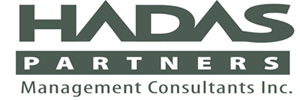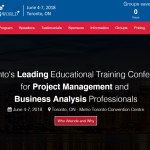If you do things right, you should have a good cross-section of activities do do your planning. These activities should be a good mix of technology, business process, communication, training, and so on.
If you want to know how to get a good balance of activities for planning, you can check out some of the earlier blogs: defining your vision; resolving issues and risks; prioritizing; and, aligning your leaders and getting them on board.
Planning your business transformation is in many ways a straightforward project management activity. The sequential steps are:
- Do a Work Breakdown Structure (WBS) to identify tasks and subtasks
- Schedule these tasks and subtasks and identify key milestones
- Assign responsibilities for timely completion
- Finally, create your task links and dependencies, assign resources, and then you’re done.
It sounds simple, and in many ways it is. However this activity falls into the category of ‘simple but not easy’.
There are three things to pay special attention to. And this is especially true of any tasks that require broader employee engagement.
So, this applies to all of your Organizational Change Management (OCM) activities, but also others. For example, process activities (end-to-end process walk-throughs, “Day-in-the-Life” sessions) and technology activities such as User Acceptance Testing (UAT).
Here are the three things to pay special attention to:
- Underestimating work durations
- Having a separate OCM schedule
- Activities not aligned to project phases (waterfall methodology) or sprints (agile methodology)
1. Assign sufficiently long durations
The question I get frequently is, “Why does it take so long to complete these activities?”
Here is the reason. Activities that involve employees more generally rely on people for whom your transformation project is only one of many priorities. That means they are less available because they are juggling many things on their plate. Also, they are not as quick to act. That’s because they don’t fully understand the reasons for your request nor the urgency. All of that chews up time.
 This is especially pronounced when working with business leaders. They may not be close to the project details, but need to make some key decisions that will impact it.
This is especially pronounced when working with business leaders. They may not be close to the project details, but need to make some key decisions that will impact it.
Just consider how busy these individuals are, together with the time they need to become comfortable making a decision. It’s easy to see how durations can stretch.
2. Embed the change activities into the project schedule
Having a separate OCM schedule was more common many years ago when OCM was a new-ish discipline. However, I still see people struggling sometimes with how to incorporate these activities into the overall transformation plan and schedule.
At times communication activities, Lunch and Learns, Readiness Assessments and so on are tracked separately. They shouldn’t be separate. These activities have to be fully integrated so that they are indistinguishable from all of your other transformation activities.
If you think about it, why should anyone care whether a task they need to participate in is an OCM, process or technology task? They shouldn’t. All they need to know is that this is a task that’s important for the successful completion of the transformation.
3. Align change activities across project phases or sprints
 There is a complication that arises when planning. Some OCM activities don’t fit neatly into waterfall project phases (and also agile sprints). That often leads project managers to exclude these activities from tracking and managing them properly. And that can result in important tasks getting missed, leading to a much more painful implementation.
There is a complication that arises when planning. Some OCM activities don’t fit neatly into waterfall project phases (and also agile sprints). That often leads project managers to exclude these activities from tracking and managing them properly. And that can result in important tasks getting missed, leading to a much more painful implementation.
Here is how to solve that. For example, you may want to do a readiness survey and assessment, but it needs to go across two phases. You may need to start it during a design phase and complete it during a development phase. This can cause headaches especially when there are formal phase closure requirements.
The solution here is to split this activity into two. You can have the survey development and approval as part of the design phase. Then the distribution, analysis and reporting is part of the development phase. That means that this activity will is given the visibility it deserves.
I have seen similar confusion with some agile teams. Sometimes they don’t know how to fit these activities within their sprints. What is important is to define the Minimum Viable Product (MVP) for these activities. For a readiness assessment survey for example, there can be two MVPs. One is the survey itself (questionnaire to be used). The other is the survey report.
Then each two week sprint requires something to be completed. Perhaps the first is a draft survey. The second a revised draft based on project team input. The third is an approved survey ready to go out.
A final word to Change Leaders
As a project or executive sponsor, these three watch-outs can add to the feeling of being overwhelmed. You already have a lot to do to begin with. And now you need to bake in longer durations. Plus your team needs to spend more time planning and aligning OCM activities into the overall schedule.
This is where you may need to go back to the prioritization activity. Perhaps not all of the activities are of equal importance, and some can be dropped or scaled back.
Just be careful not to scale back most of the OCM activities in favour of technology or process ones. You invested a lot in this strategic transformation. However your Return on Investment (ROI) will come from people using your processes and technologies.
If you don’t do enough so that all of your employees are willing and able to adopt and sustain the changes you invested in, then don’t be upset if a year later they are still doing many things the old way. That’s how value gets eroded in these projects.
Like this blog? Was the advice helpful? Why not share it?












